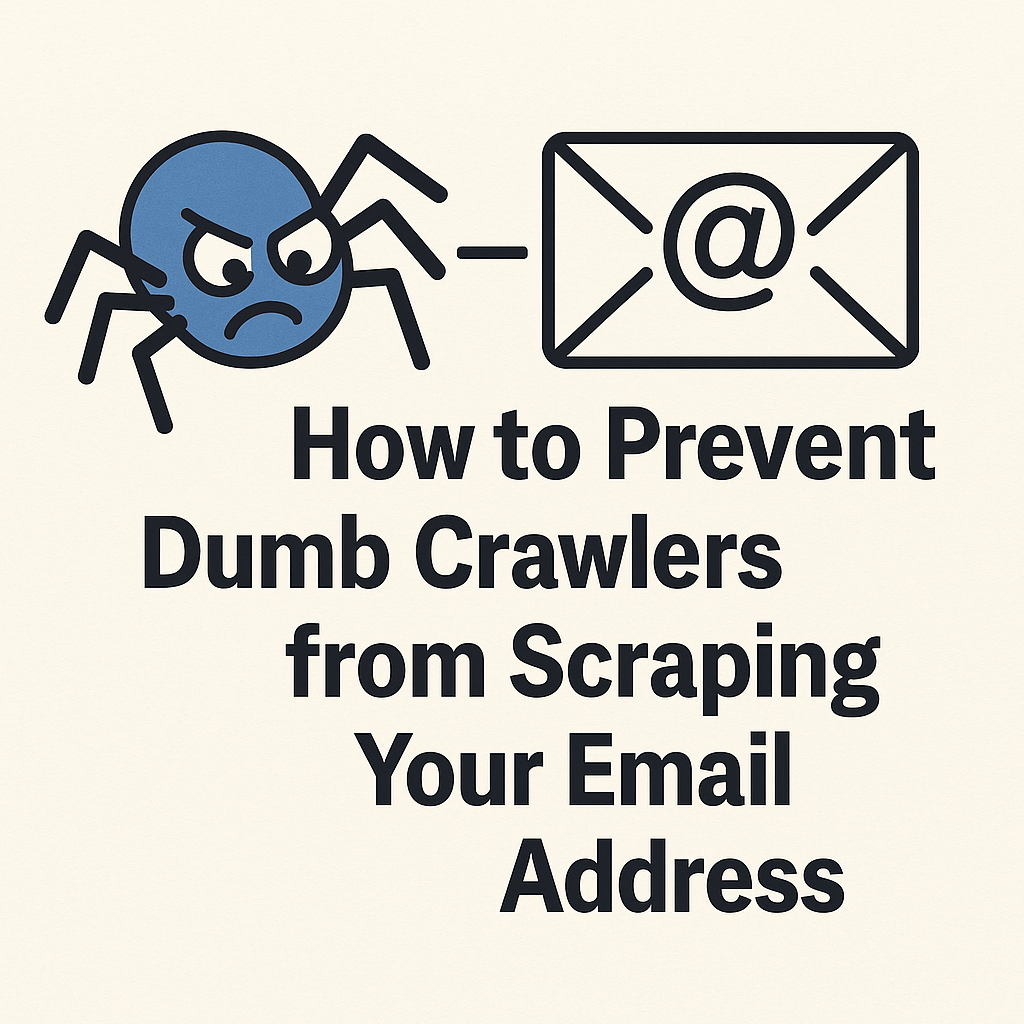How to Prevent Dumb Crawlers from Scraping Your Email Address
If you’ve ever embedded your email address in a website using a mailto: link, you’ve probably received spam. Why? Because simple bots crawl websites looking for @domain.com or mailto: patterns to harvest for junk.
Luckily, there are effective ways to protect your email address from dumb crawlers while still making it usable for real visitors. Here's how.

❌ Why mailto: in plain HTML is bad
<a href="mailto:you@example.com">Email me</a>
This is easy for humans and bots to read. Dumb scrapers look for:
- Strings with
@and.com- Themailto:scheme
Once they find it, your inbox becomes a spam magnet.
🧠 What are “dumb” crawlers?
"Dumb" crawlers:
- Do not execute JavaScript - Do not parse or decode HTML entities - Just scan raw HTML for recognizable patterns
They're fast, cheap, and widely used by spammers.
✅ Obfuscation Strategies That Work
1. Use HTML Entity Encoding
Instead of writing your email directly, encode each character:
<a href="mailto:you@example.com">
Email me
</a>
This is still functional in the browser, but harder for dumb bots to read.
2. Set the href Dynamically with JavaScript
Here’s a basic approach:
<a id="email-link">Email me</a>
<script>
const user = 'me' const domain = 'rossyanez.com' const link =
document.getElementById('email-link') link.href = `mailto:${user}@${domain}`
</script>
Bots won't see the email since they don’t run JS.
3. Use a Custom React Hook (for Next.js / React projects)
// useEmailLink.ts
import { useEffect } from 'react'
export function useEmailLink(linkId = 'email-link') {
useEffect(() => {
const email = 'me@rossyanez.com'
const mailto = `mailto:${email}`
const link = document.getElementById(linkId) as HTMLAnchorElement | null
if (link) link.href = mailto
}, [linkId])
}
Use this inside a component:
export default function SafeEmailLink({ linkId = 'email-link' }) {
useEmailLink(linkId)
return (
<a id={linkId} className="text-sm text-blue-500 hover:underline">
Email me
</a>
) }
✅ Bonus: Combine Techniques for Maximum Safety
You can encode the email in HTML as a fallback, then override it with JavaScript:
<a
id="email-link"
href="mailto:you@example.com">
Email me
</a>
This way:
- If JS fails, users can still click - Most dumb scrapers won’t decode it - Smart bots will see it, but you’re blocking the majority
❌ What Doesn’t Help Much
- Adding
rel="nofollow"(for SEO only) - Blockingmailto:inrobots.txt(bots don’t care) - Usingdisplay: noneor off-screen hiding (easily bypassed)
🛡️ TL;DR — Best Practice
- Avoid putting your email in visible plain text - Don’t use raw
mailto:in HTML - Dynamically inject email links with JavaScript - Use entity encoding as a fallback for robustness.